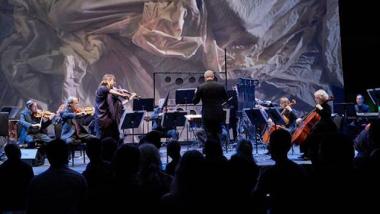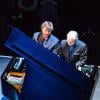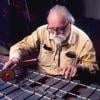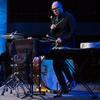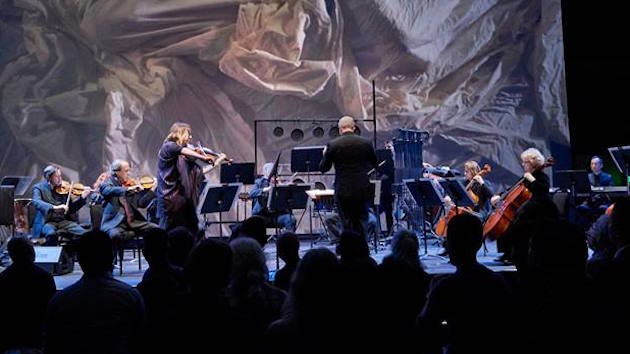
What would you imagine a cross between a nightclub and a concert hall to look and sound like? Perhaps SoundBox, a concert series and an experimental performance space backstage at the San Francisco Symphony’s Davies Hall, provides some clues. This black-lighted space is — and is meant to be — intriguing and hip. With food and drinks on one floor and the performance area surrounded by screens on another, SoundBox offers a multisensory aesthetic experience. On Saturday, artists performed “Dream State,” a program curated and conducted by Edwin Outwater. With works ranging from Fauré and Ravel to Daníel Bjarnason and Salvatore Sciarrino, it invited listeners to wade through shadowy dreams — and even dark nightmares.
Contributing to the event’s humming, energetic vibe was that there were far more ticketholders than seats. I arrived 40 minutes early. By heading straight to will-call, I skipped a long line of aspiring ticket purchasers. Even so, most of the seats were already gone. A woman kindly pointed out one empty stool next to her at the back of the space. From there, I struggled to see the musicians because a crowd of people was standing in front of me. To avoid this scenario, you can purchase a more exclusive “producer pass” for $350, which were sold out on Saturday. If you can’t snag the pricier tickets, then wear comfortable shoes.
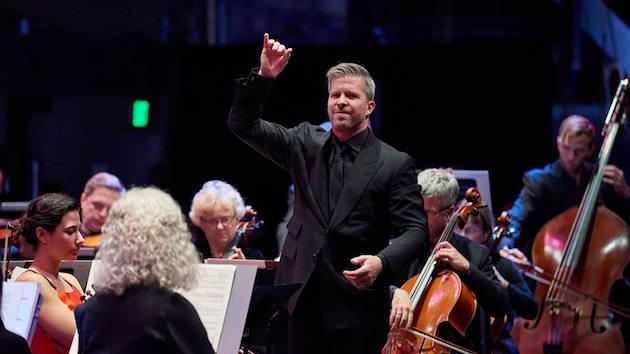
That said, it’s wonderful that SoundBox is able to draw such large crowds to hear music that — on Saturday, at least — ranged from canonic to contemporary. The uncommon diversity of the audience members was also refreshing. It was a mix of snazzily dressed young professionals, apparent Burning Man enthusiasts, and an older, more traditional concert-going crowd.
The program was divided into three acts. Each 20-minute act comprised two or three shorter works. Two 20-minute intermissions separated the acts. When someone asked me why an intermission happened so early into the program, I replied that two intermissions provide twice as much time to sell drinks. And while this is true, perhaps the shorter segments better fit our modern era. After all, we live in a distracted world with fleeting news cycles and short attention spans.
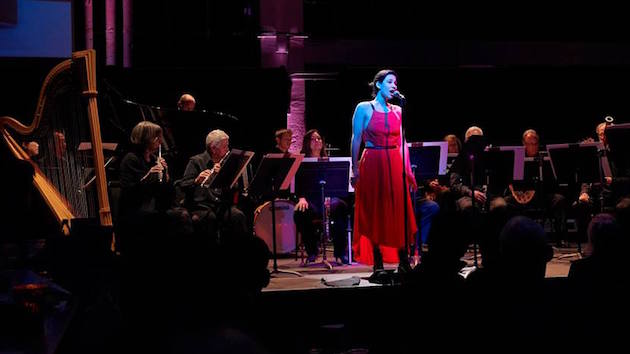
The evening opened with “Sound-A-Sleep,” a tune by the lead singer of Blondie, Deborah Harry, and arranged for small ensemble by Outwater. It was my least favorite number. It came across as trite, but the vocalist, Eliza Bagg, performed with an almost white, vibrato-less tone that suited the song.
To close the first act, Bjornason’s Sleep Variations followed. This work for viola solo and chamber string ensemble was inspired by a poem by Margaret Atwood. Intriguingly, a recitation of this poem did not precede the work, but instead followed after the first intermission.
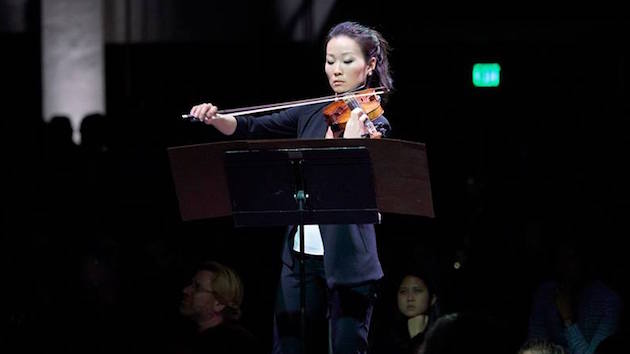
The second act opened with a gem, Sciarrino’s Vivace and Andante from Six Caprices for Solo Violin. Helen Kim, a violinist in the San Francisco Symphony, played these movements that almost musicalize silence. Performing in the center of the space, the microphones amplified Kim’s soft — and virtuosic — nuances without, remarkably, picking up the appreciable ambient noise from the surrounding audience.
Then followed another breathtakingly ghostly piece, Fauré’s “La mort de Mélisande” from his Pelléas et Mélisande Suite. This poignant piece was played at the composer’s own funeral, and on Saturday, images depicting decrepitude and death were its backdrop.
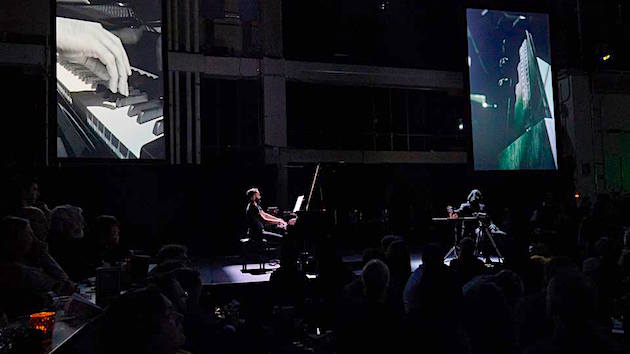
The pieces in this second act grew progressively scary. The last was Kagel’s MM 51, a piece the composer described in terms of “unspoken fears and dangers.” The projections showed the live piano soloist, who grew increasingly maniacal vis-à-vis a relentless metronome. A cryptic, foreboding Slenderman sort of figure was also live in both the images and also in the space, but I struggled to see him.
The third act had two songs featuring Bagg and Ravel’s “Le jardin féerique” (“Enchanted Garden”) from his Ma mère l’Oye (“Mother Goose Suite”), though I admit to bowing out during the second intermission. But just because SoundBox wasn’t my scene doesn’t mean it couldn’t be yours: If you don’t mind navigating a crowd and you seek the trendy, the hip, and the new, you should consider experiencing SoundBox.

